The most expensive plane in the world
I’m away on holiday (Cuba!!) at the moment. Luckily, Tatiana has volunteered to write another post based on photographs logged in Picryl, where she works. Her last post was fascinating so I’m excited to see what she’s sharing with us this week!
Northrop B-2 Spirit Bomber is the most expensive flying machine in the world, at least from what we know from open sources.
B-2 unit cost: approximately $1.157 billion fiscal 1998 constant dollars. It is considered to be one of the most well-designed and high-powered planes ever built.
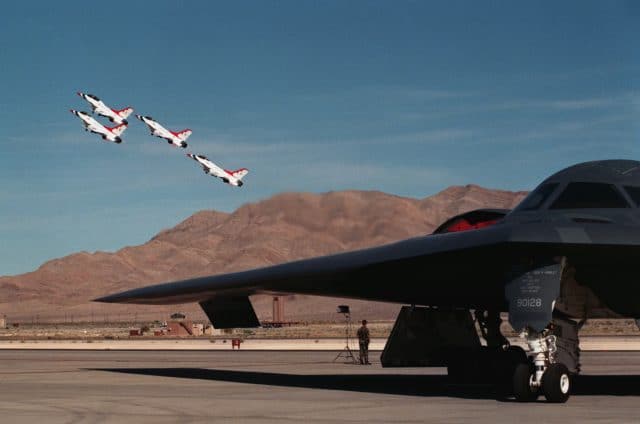
The appearance of the B-2 was preceded by two findings completely unrelated and separated in time.
The first one dates back to the beginning of 1939 when American designer Jack Northrop started working on the Northrop N-1M flying wing aircraft competing with the similar designs of German engineer Hugo Junkers. A clean flying wing was believed to be the most aerodynamically efficient design configuration for a fixed wing aircraft. In addition, it offered a high structural efficiency, light weight and highest fuel efficiency. In reality, those prototypes did not demonstrate a noticeable advantage in flight range while exposed some technical problems, leading to the survival of conventional fuselage schemes. Nobody envisioned at the time that Northrop’s machine would become the prototype of stealth aircraft.
The second was the invention of radar-absorbing materials and paints, alongside of the discoveries of geometries and facet structures which are capable of scattering and substantially absorbing radio waves so the aeroplane is not detectable by conventional radars.
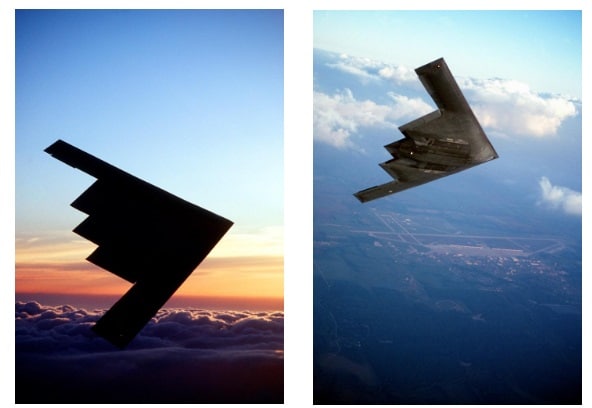
Like many other technological and scientific breakthroughs of the second half of the 20th century, the emergence of B-2 Spirit was a result of the Cold War with the Soviet Union. The long-standing priority of U.S. Air Force Command was to get bomber planes capable of piercing through a robust air defence of the alleged enemy.
The shape of the flying wing reduces the bending moment of bearing structures (reduces the material stress on the bearing structures?) and evenly spreads the weight of the machine along the body-wing span. It improved the aerodynamic performance and made the aircraft more manoeuvrable. The B-2 was designed to fly at low and ultra-low altitude in a turbulent environment. To make this possible, the pilot’s cockpit was placed closer to the nose of the aircraft while an unusual shape of the tail worked in the disturbed atmosphere as an aerodynamic damping.
To reduce radar visibility, engineers hid all the elements that reflect the radio signal and further decreased the radar footprint through radio absorbing materials.
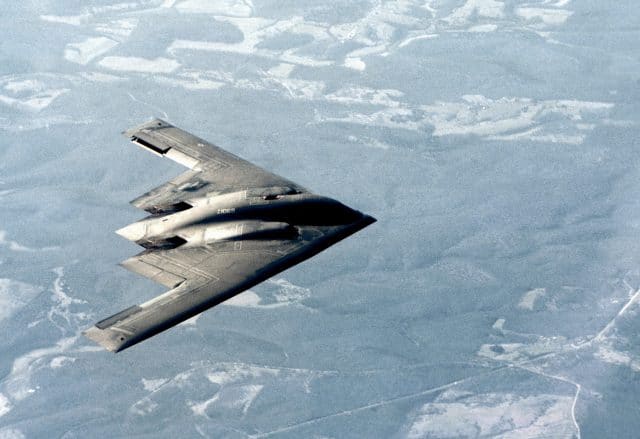
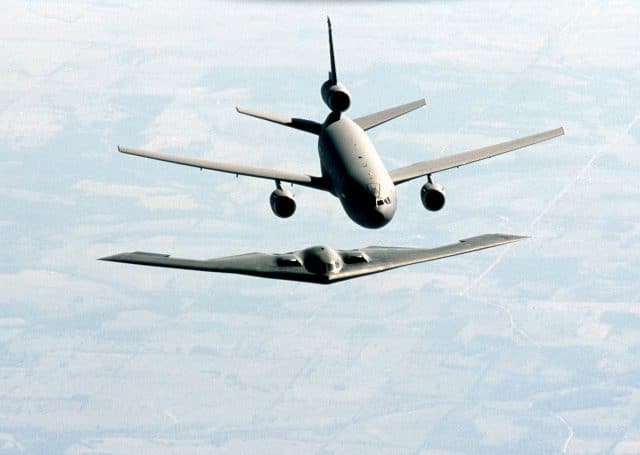
Despite the fact that the creation of the severe-looking bomber began in 1979, the first flight took place a decade later. They had planned 132 planes but in the end, the USSR collapsed and only twenty machines were delivered.
These B-2 Spirits were used in military operations in Yugoslavia, Iraq and Afghanistan. There are now only nineteen aircraft in the US arsenal: one of the planes crashed in a non-combat incident.
Big Bird crashed during take-off from the Andersen Air Force Base on February 23, 2008. Both pilots ejected safely. The cause of the accident was condensation in the sensors.
Wikipedia summary of the investigation
The findings of the investigation stated that the B-2 crashed after “heavy, lashing rains” caused moisture to enter skin-flush air-data sensors. The data from the sensors are used to calculate numerous factors including airspeed and altitude. Because three pressure transducers had been improperly calibrated by the maintenance crew due to condensation inside devices, the flight-control computers calculated inaccurate aircraft angle of attack and airspeed. Incorrect airspeed data on cockpit displays led to the aircraft rotating 12 knots slower than indicated. After the wheels lifted from the runway, which caused the flight control system to switch to different control laws, the erroneously sensed negative angle of attack caused the computers to inject a sudden, 1.6‑g, uncommanded 30-degree pitch-up maneuver. The combination of slow lift-off speed and the extreme angle of attack (and attendant drag) resulted in an unrecoverable stall, yaw, and descent. Both crew members successfully ejected from the aircraft soon after the left wing tip started to gouge the ground alongside the runway. The aircraft impacted the ground, tumbled, and burned after its fuel ignited.
This crash was the first for B2 “Spirit” bomber in fifteen years of service, and it went down in history as the most expensive aviation accident. The total damage was estimated at US $ 1.4 billion.
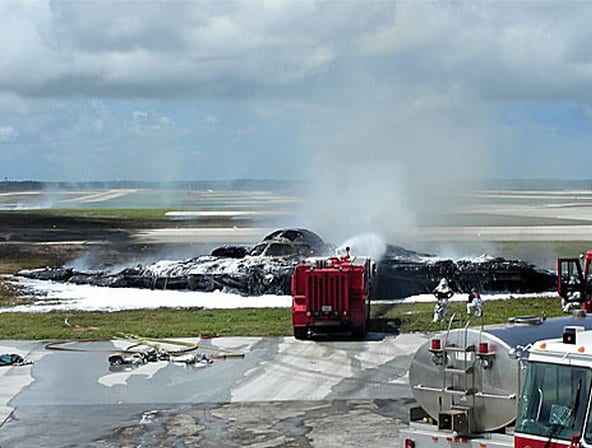
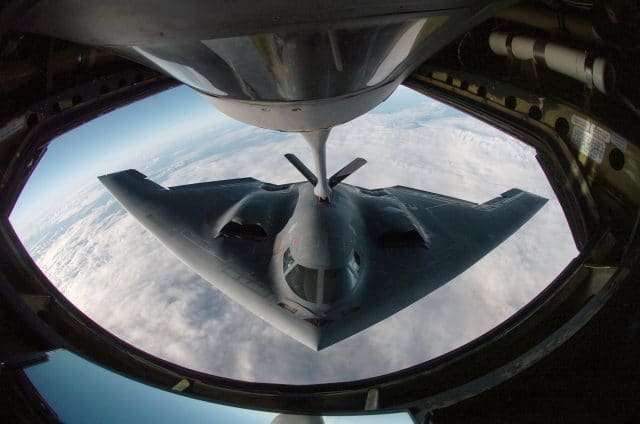
The plane has impressive features: the attack mission attitude is up to 50,000 feet, an operational range is more than 6,000 nautical miles on internal fuel and over 10,000 nautical miles with one mid-air refuelling.
The B-2 Spirit has one of the most notable designs in modern aviation. Powerful, manoeuvrable and stealthy, the aircraft continues to inspire admiration for the skill of designers.
See the whole collection of 123 photographs of the “B-2 Spirit Bomber” on Picryl: https://picryl.com/collections/northrop-grumman-b-2-spirit-bomber








I have the advantage of living only seven miles from the second B-2 test
frame #AT-1000 at the National Museum of the US Air Force, that has been mocked to resemble The Spirit of Ohio #82-1070.
If I was only three inches taller I could touch it. I have thought about
jumping, but they have lots of no nonsense signs on how that is
verboten and they keep a very close and disapproving eye on the
visitors, just waiting for such shennanigans. Gitmo Prisoner Orange
would do nothing for my complexion.
Having just recently read about the B2, including some speculation, I paused for a second over the description of it as “high-powered”.
It’s thrust-to-weight ratio is apparently less than some commercial airliners and less than the B1.
Of course it was never meant to be fast, only stealthy, but it’s curious how un-powerful it is.
That’s interesting; I didn’t know that! Clearly I need to go find out more…